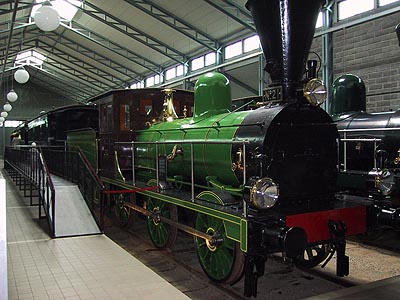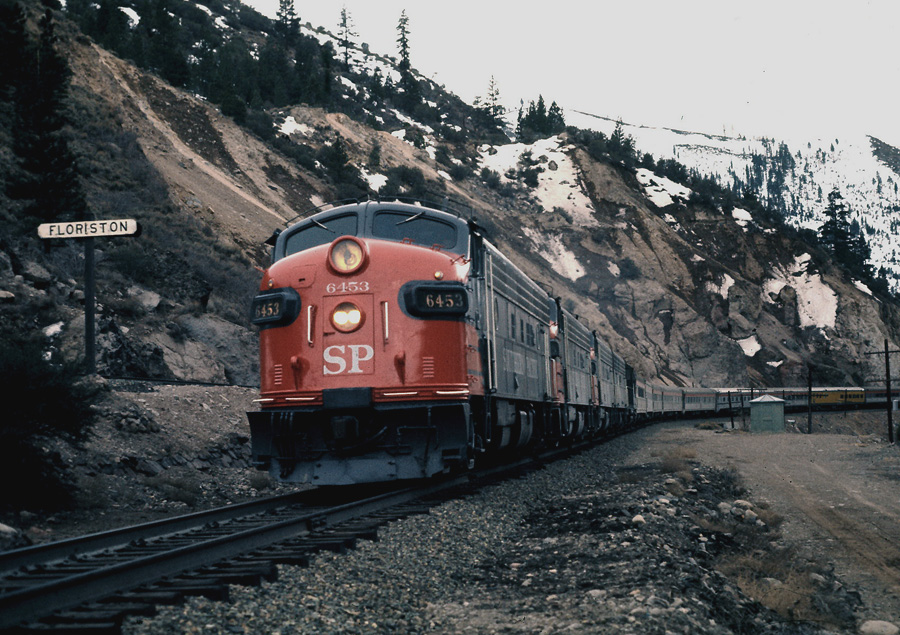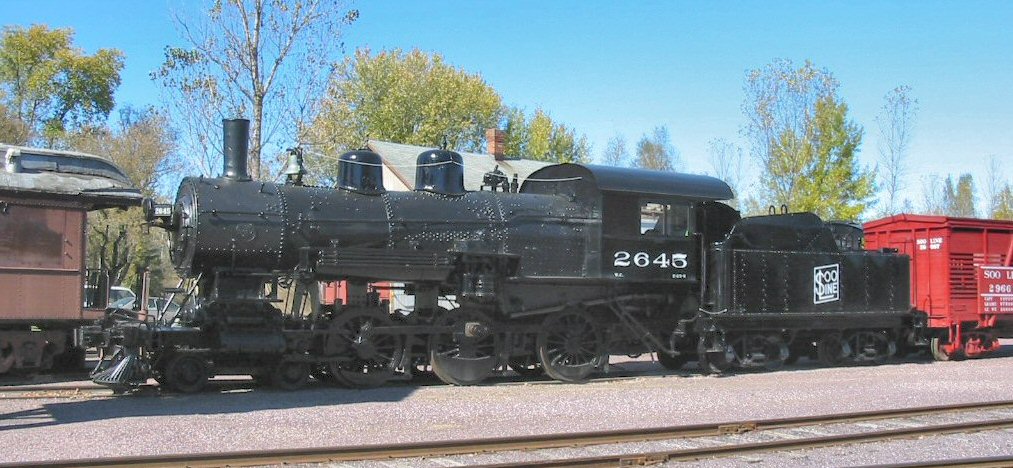|
1898 In Rail Transport
Events March * March 16 – Original Finnish Railway Museum opens in Helsinki. April * April 1 – The Aberlady, Gullane and North Berwick Railway opens between Aberlady Junction and Gullane, Scotland. * April 20 – Electrification of the South Side Elevated Railway in Chicago is completed ending all steam locomotive operations on the route. Multiple-unit (M.U.) train control is also introduced by railroad engineer Frank J. Sprague. May * May – E. H. Harriman becomes chairman of the executive committee for the Union Pacific Railroad. * May 11 – The Lynton and Barnstaple Railway in England opens. * May 16 – Passenger service is inaugurated on the Lynton and Barnstaple Railway. June * June 12 – Regular revenue service begins on the Detroit, Ypsilanti and Ann Arbor Railway in Michigan. July * July 3 – Rail transport in Sudan: Desert railway from Wadi Halfa completed to Atbara by British military engineers on 1,067 mm (3 ft 6 in) gauge. * July 11 ... [...More Info...] [...Related Items...] OR: [Wikipedia] [Google] [Baidu] |
Finnish Railway Museum
The Finnish Railway Museum ( fi, Suomen Rautatiemuseo) is located in Hyvinkää, Finland. It was founded in 1898 and located in Helsinki Helsinki ( or ; ; sv, Helsingfors, ) is the Capital city, capital, primate city, primate, and List of cities and towns in Finland, most populous city of Finland. Located on the shore of the Gulf of Finland, it is the seat of the region of U .... The museum was moved to Hyvinkää in 1974. The museum is on the original station and yard site of the Hanko–Hyvinkää railway. In addition to the station building, there is a roundhouse and several other preserved buildings, mainly from the 1870s. The museum also has a live steam backyard railroad track, where train rides are offered to the public during special run days in the summer months. Exhibits See also * Jokioinen Museum Railway * Hanko–Hyvinkää railway External links Finnish Railway MuseumOfficial website* ttp://commons.wikimedia.org/wiki/Steam_locomotives_of_Finland P ... [...More Info...] [...Related Items...] OR: [Wikipedia] [Google] [Baidu] |
Waterloo & City Line
The Waterloo & City line, colloquially known as The Drain, is a London Underground shuttle line that runs between Waterloo and Bank with no intermediate stops. Its primary traffic consists of commuters from south-west London, Surrey and Hampshire arriving at Waterloo main line station and travelling forward to the City of London financial district. For this reason, the line has historically not operated on Sundays or public holidays, except in very limited circumstances. However, following the COVID-19 pandemic, the line is currently only open on weekdays. It is one of only two lines on the Underground network to run completely underground, the other being the Victoria line. Printed in turquoise on the Tube map, it is by far the shortest line on the Underground network, being long, with an end-to-end journey lasting just four minutes. In absolute terms, it is the least-used Tube line, carrying just over 15 million passengers annually. However, in terms of the average nu ... [...More Info...] [...Related Items...] OR: [Wikipedia] [Google] [Baidu] |
Southern Pacific Railroad
The Southern Pacific (or Espee from the railroad initials- SP) was an American Railroad classes#Class I, Class I Rail transport, railroad network that existed from 1865 to 1996 and operated largely in the Western United States. The system was operated by various companies under the names Southern Pacific Railroad, Southern Pacific Company and Southern Pacific Transportation Company. The original Southern Pacific began in 1865 as a land holding company. The last incarnation of the Southern Pacific, the Southern Pacific Transportation Company, was founded in 1969 and assumed control of the Southern Pacific system. The Southern Pacific Transportation Company was acquired in 1996 by the Union Pacific Corporation and merged with their Union Pacific Railroad. The Southern Pacific legacy founded hospitals in San Francisco, Tucson, Arizona, Tucson, and Houston. In the 1970s, it also founded a telecommunications network with a state-of-the-art microwave and fiber optic backbone. This ... [...More Info...] [...Related Items...] OR: [Wikipedia] [Google] [Baidu] |
Sunset (magazine)
''Sunset'' is a lifestyle magazine in the United States. ''Sunset'' focuses on homes, cooking, gardening, and travel, with a focus almost exclusively on the Western United States. The magazine is published six times per year by the Sunset Publishing Corporation which was sold by Time Inc. in November 2017 to Regent, a private equity firm led by investor Michael Reinstein. History Establishment ''Sunset'' began in 1898 as a promotional magazine for the Southern Pacific Railroad, designed to combat the negative "Wild West" stereotypes about California. The '' Sunset Limited'' was the premier train on the Southern Pacific Railroad's Sunset Route, which ran between New Orleans and San Francisco (the train is still in operation—from Los Angeles—as part of the national Amtrak system). ''Sunset Magazine'' was started to be available onboard and at the station, in order to promote the West. It aimed to lure tourists onto the company's trains, entice guests to the railroad's resor ... [...More Info...] [...Related Items...] OR: [Wikipedia] [Google] [Baidu] |
Wrawby Junction Rail Crash (1898)
On 17 October 1898 at Wrawby Junction, on what was the Great Central Railway near Brigg in Lincolnshire, England, a passenger train collided with a derailed goods train; killing 8 people and injuring 26 more. The passenger train was the 16:45 from Cleethorpes to Manchester consisting of a brake van, three passenger carriages and a rear guard's van. The goods train which had left Grimsby earlier in the day for Doncaster consisted of 44 waggons loaded with larch tree trunks, three trunks to a load secured with chains. The length of the trunks (up to 42 ft) necessitated the close coupling of the waggons. The goods train was being shunted on a curve at low speed adjacent to the main line when five trucks derailed just as the passenger train approached. One truck toppled over; its load of timber projecting over the main line. The brake van 'was carried away with the exception of the offside and roof'. The next two carriages were 'clean swept away' above the floor level; the first ... [...More Info...] [...Related Items...] OR: [Wikipedia] [Google] [Baidu] |
Wellingborough Rail Accident
On 2 September 1898 at Wellingborough railway station a postman brought a mailcart to the station with mail which he was to see onto a train due at 20:22. The mail should then have been brought to the down platform through a passageway (normally closed by a gate kept locked from the inside) between the station yard and the platform. The postman went into the station collected a luggage trolley and took it along the platform to the platform side of the gate. Whilst the platform itself sloped towards the railway tracks quite noticeably, the passageway did not. The postman put down the handle by which he was drawing the trolley and unlocked the gate. He then reached round for the trolley handle only to see the trolley running off the edge of the platform and onto the down main line. He and the station foreman tried frantically to clear the trolley off the line as the signals were already set for the 19:15 London St Pancras to Manchester express to pass through the station non-stop ... [...More Info...] [...Related Items...] OR: [Wikipedia] [Google] [Baidu] |
Republic Of The Congo
The Republic of the Congo (french: République du Congo, ln, Republíki ya Kongó), also known as Congo-Brazzaville, the Congo Republic or simply either Congo or the Congo, is a country located in the western coast of Central Africa to the west of the Congo river. It is bordered to the west by Gabon, to its northwest by Cameroon and its northeast by the Central African Republic, to the southeast by the Democratic Republic of the Congo, to its south by the Angolan exclave of Cabinda Province, Cabinda and to its southwest by the Atlantic Ocean. The region was dominated by Bantu peoples, Bantu-speaking tribes at least 3,000 years ago, who built trade links leading into the Congo River basin. Congo was formerly part of the French colonial empire, French colony of French Equatorial Africa, Equatorial Africa. The Republic of the Congo was established on 28 November 1958 and gained independence from France in 1960. It was a Marxist–Leninist state from 1969 to 1992, under the name ... [...More Info...] [...Related Items...] OR: [Wikipedia] [Google] [Baidu] |
Congo Free State
''(Work and Progress) , national_anthem = Vers l'avenir , capital = Vivi Boma , currency = Congo Free State franc , religion = Catholicism (''de facto'') , leader1 = Leopold II of Belgium , year_leader1 = 1885–1908 , title_leader = Sovereign , representative1 = F. W. de Winton , year_representative1 = 1885–1886 , representative2 = Théophile Wahis , year_representative2 = 1900–1908 , title_representative = Governor-General , today = Democratic Republic of the Congo , demonym = , area_km2 = 2,345,409 , area_rank = , percent_water = 3.32 , population_estimate = 9,130,000 , population_estimate_year = 1907 , population_density_km2 = 3.8 , GDP_PPP = , GDP_PPP_year = , HDI = , HDI_year = The Congo Free State, al ... [...More Info...] [...Related Items...] OR: [Wikipedia] [Google] [Baidu] |
Bas-Congo
Kongo Central ( kg, Kongo dia Kati ), formerly Bas-Congo is one of the 26 provinces of the Democratic Republic of the Congo. Its capital is Matadi. History At the time of independence, the area now encompassing Kongo Central was part of the greater province of Léopoldville, along with the capital city of Kinshasa and the districts of Kwango, Kwilu and Mai-Ndombe. Under Belgian colonial rule, the province was known as Bas-Congo (as in "Lower Congo River") and was renamed Kongo Central after independence. (Article 1) Under the regime of Mobutu Sese Seko from 1965 to 1997, the Congo river was renamed as ''Zaire''. The province was named as Bas-Zaïre. The name was later reverted to Bas-Congo. It was subsequently renamed as Kongo Central in 2015. Geography Kongo Central is the only province in the country with an ocean coastline; it has narrow frontage on the Atlantic Ocean. It borders the provinces of Kinshasa to the north-east, Kwango to the east, and the Republic of Angol ... [...More Info...] [...Related Items...] OR: [Wikipedia] [Google] [Baidu] |
Société Des Chemins De Fer Vicinaux Du Mayumbe
The Mayumbe line was a long gauge narrow gauge railway in the north west of the Democratic Republic of the Congo between the port of Boma and Tshela. History The Société des Chemins de fer vicinaux du Mayumbe (CVM) was created on July 30, 1898, to build and operate a network of railways built at a narrow gauge in the province of Lower Congo, in the Congo Free State which became Belgian Congo then Republic of the Congo, with a planned extension to the Republic of Congo. On 1 January 1936, the CVM was integrated with the Office des Transports Coloniaux (OTRACO). In 1974, it was merged with the Office National des Transports ( ONATRA). The line was dismantled in 1984 under Mobutu Sese Seko, along with the local industry. Line Boma - Lukula - Tshela (140 km) * Boma (Plateau) - Bangu (8 km), opening May 7, 1899 * Bangu - Kisundi (35 km), opening on January 1, 1900 * Kisundi - Lukula (35 km), opening December 31, 1901 * Lukula - Tshela (60 km), open ... [...More Info...] [...Related Items...] OR: [Wikipedia] [Google] [Baidu] |
Steam Locomotive
A steam locomotive is a locomotive that provides the force to move itself and other vehicles by means of the expansion of steam. It is fuelled by burning combustible material (usually coal, oil or, rarely, wood) to heat water in the locomotive's boiler to the point where it becomes gaseous and its volume increases 1,700 times. Functionally, it is a steam engine on wheels. In most locomotives, the steam is admitted alternately to each end of its cylinders, in which pistons are mechanically connected to the locomotive's main wheels. Fuel and water supplies are usually carried with the locomotive, either on the locomotive itself or in a tender coupled to it. Variations in this general design include electrically-powered boilers, turbines in place of pistons, and using steam generated externally. Steam locomotives were first developed in the United Kingdom during the early 19th century and used for railway transport until the middle of the 20th century. Richard Trevithi ... [...More Info...] [...Related Items...] OR: [Wikipedia] [Google] [Baidu] |
Brooks Locomotive Works
The Brooks Locomotive Works manufactured railroad steam locomotives and freight cars from 1869 through its merger into the American Locomotive Company (ALCO) in 1901. History When the New York and Erie Railroad (NY&E) relocated its shops facilities from Dunkirk, New York, to Buffalo in 1869, Dunkirk lost its largest employer. Coming to the city's rescue was Horatio G. Brooks (1828–1887), the former chief engineer of the NY&E who was at the controls of the first train into Dunkirk in 1851. In 1869, Brooks leased the Dunkirk shops facility from the NY&E and formed the Brooks Locomotive Works. The new company officially opened on November 13, 1869. The company's first steam locomotive was completed the following month as part of an order for the NY&E, the company's first customer. Within a couple of years of its opening, Brooks was producing as many as seven new locomotives per month, compared to one per month while the facility was controlled by the NY&E. Brooks buil ... [...More Info...] [...Related Items...] OR: [Wikipedia] [Google] [Baidu] |





